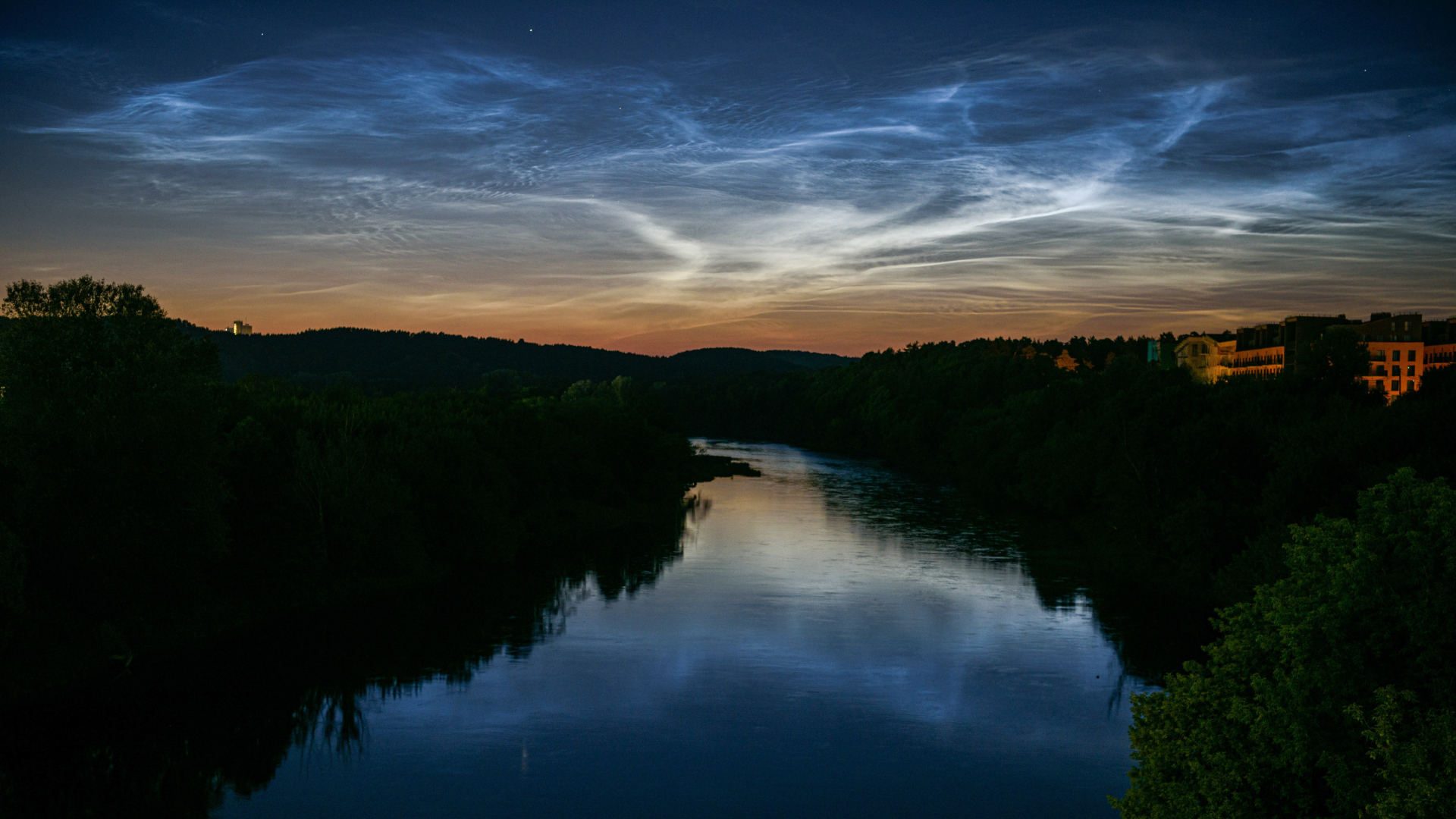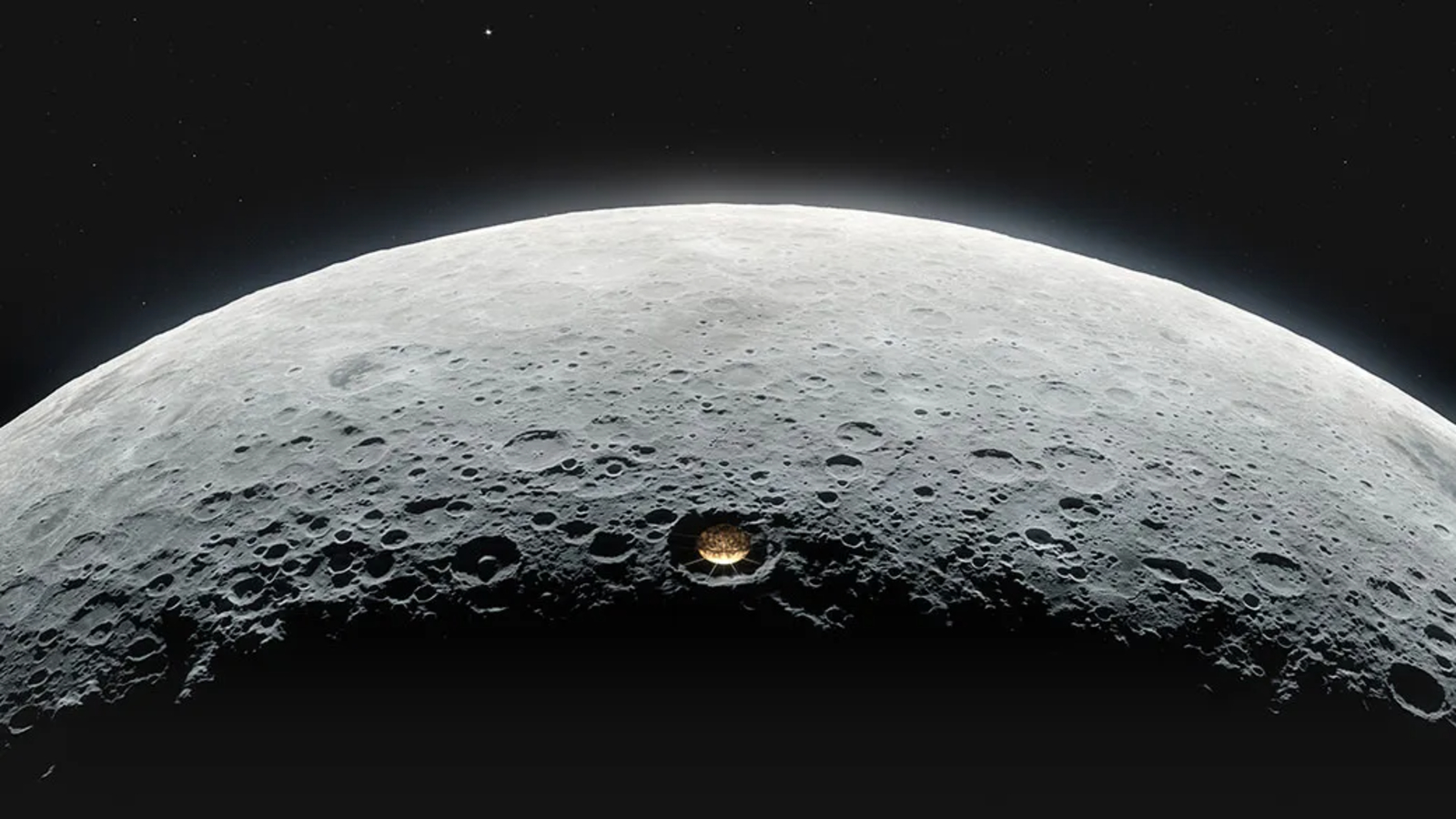If you look up at the sky on a clear night, shortly after one of SpaceX‘s many Falcon 9 rocket launches, you might see a bright string of lights zooming across the heavens.
This phenomenon, known as a Starlink train, occurs when light reflects off a newly deployed batch of SpaceX satellites before they eventually fan out and become part of the wider Starlink network. It is also a common reminder that giant groups of private satellites, known as “megaconstellations,” are quickly becoming a reality.
But behind these lights lurks an invisible — and much more problematic — form of radiation: radio waves.
If our eyes could also detect this hidden radiation, the sky would be full of bright spots and nonstop flashing that would obscure the distant signals from objects beyond low Earth orbit (LEO). And unlike the light pollution we see from satellites, these intrusive signals don’t just happen at night or in the hours after new satellites are released — they happen all the time.
Some researchers are so worried about this invisible pollution that they think we could eventually reach an “inflection point,” beyond which ground-based astronomy instruments could become radio-blind to the cosmos.
“It would basically mean that no radio astronomy from the ground would be possible anymore,” Benjamin Winkel, a radio astronomer at the Max Planck Institute of Radio Astronomy in Germany, told Live Science. “It will eventually reach a point where it is not worthwhile to operate a [radio] telescope anymore.”
At the rate that megaconstellations are growing, this could happen within the next 30 years, some experts predict.
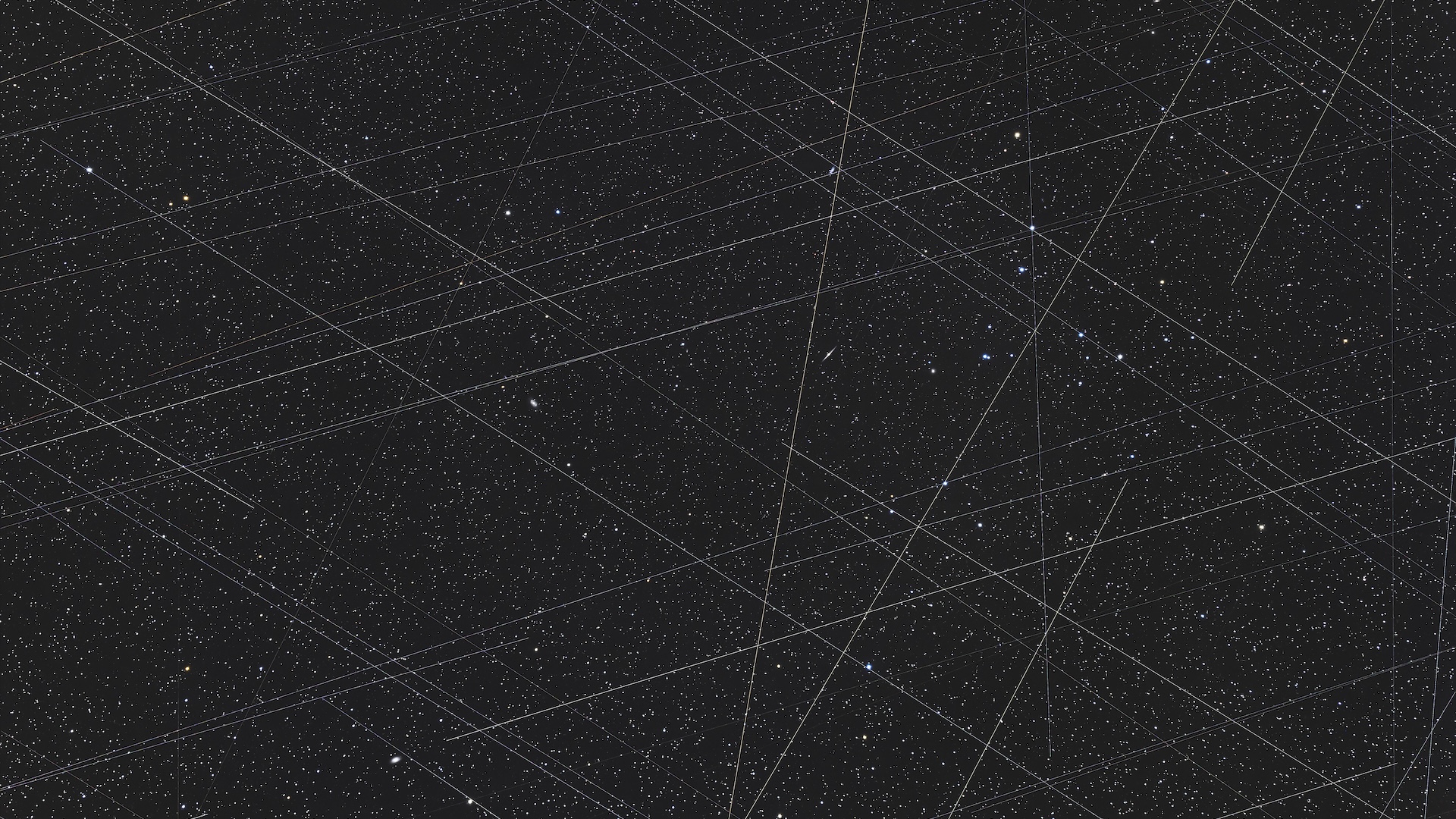
Unique view of the cosmos
Radio astronomy allows us to see a host of hidden cosmic structures and phenomena that we can’t detect through visual light alone.
Scientists use radio frequencies to study a range of phenomena, from the jets of energy shooting from supermassive black holes to the subtle changes in the trajectories of near-Earth asteroids.
Radio telescopes are also constantly finding phenomena, such as fast radio bursts — millisecond pulses of ultra-energetic radiation, some of which repeat at regular intervals — that come from super-dense, highly magnetic objects such as neutron stars. Their observations also provide some of the best insights into the “Age of Reionization,” as far back as 400 million years after the Big Bang, when the first stars and galaxies were emerging from clouds of primordial hydrogen.
Scientists scouring the skies for signs of alien life, such as those at the Search for Extraterrestrial Intelligence (SETI) Institute, also favor hunting in radio waves because any advanced civilizations will likely use these wavelengths for communication, just as humans do.
We also rely on radio telescopes to pin down our precise location compared to other cosmic objects, which is constantly shifting.
The radio portion of the electromagnetic spectrum ranges from roughly 3 kilohertz to over 300 gigahertz — equal to wavelengths from more than 60 miles (100 kilometers) long down to 0.04 inches (1 millimeter). However, not all of these wavelengths are visible from Earth, and most astronomers hunt for signals somewhere between 1 megahertz and 100 GHz, according to the British Astronomical Association.
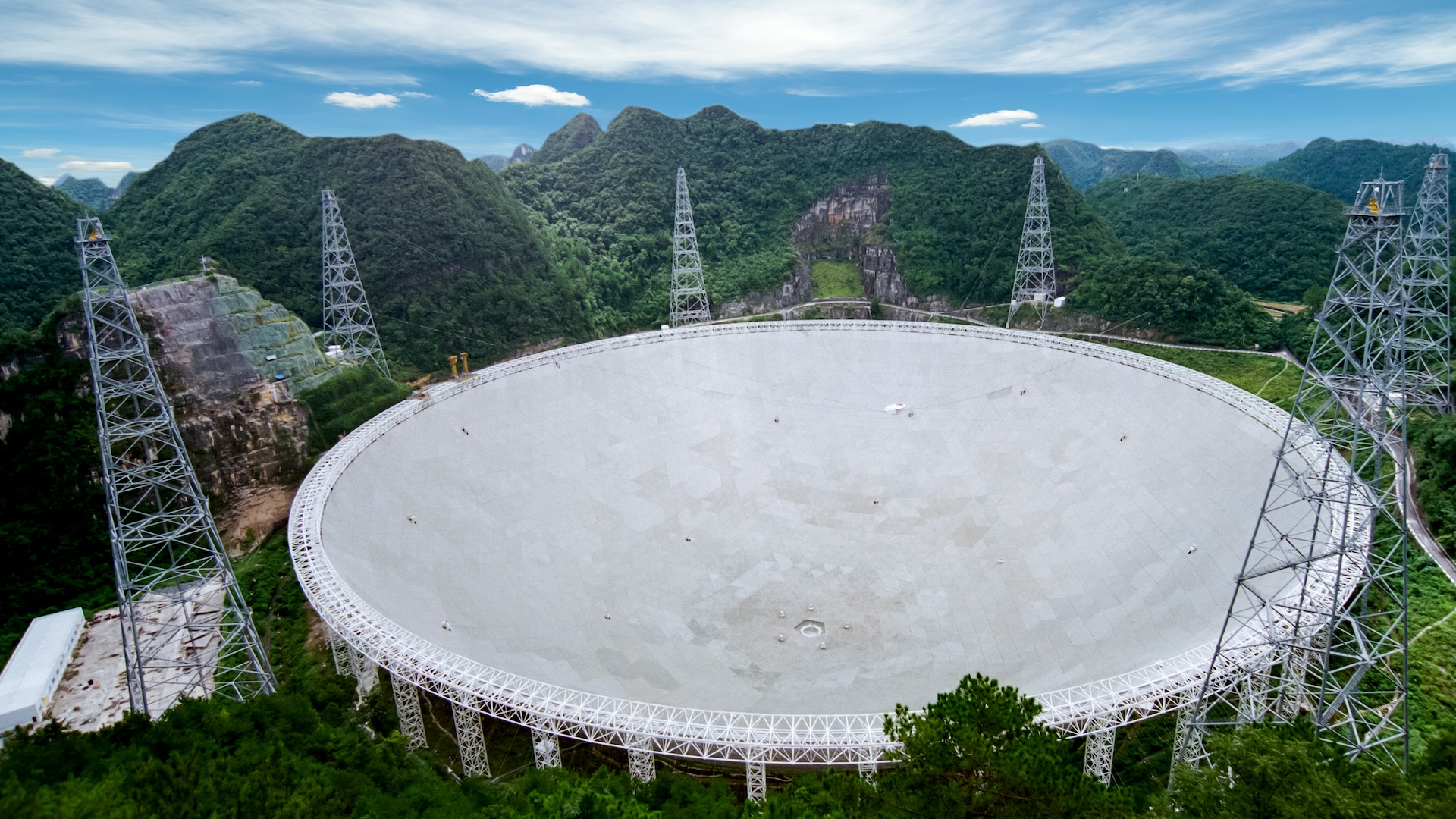
Many of the world’s biggest radio telescope arrays focus on even narrower ranges. For instance, the world’s largest single telescope, China’s Five-hundred-meter Aperture Spherical Radio Telescope, searches between 70 MHz to 3 GHz; while the Square Kilometre Array Observatory (SKAO), the world’s largest array of radio telescopes scattered across Australia and South Africa, scans between 50 MHz to 14 GHz.
But increasingly, many of these frequencies are being bombarded by noise from Starlink and other satellites.
Leaking radio waves
While satellite messages deliberately beamed down to operators on Earth, known as intended downlinks, are problematic, the biggest risk to these projects is what’s known as unintended electromagnetic radiation (UEMR), or the radio waves that inadvertently leak out of the spacecraft at all times.
“This was not a problem before, when the number of satellites was low,” Federico Di Vruno, a radio astronomer at SKAO and co-director of the International Astronomical Union’s recently created Centre for the Protection of the Dark and Quiet Sky from Satellite Constellation Interference (CPS), told Live Science. “But now the situation has changed.”
And UEMR is particularly prevalent among private satellite constellations, such as Starlink.
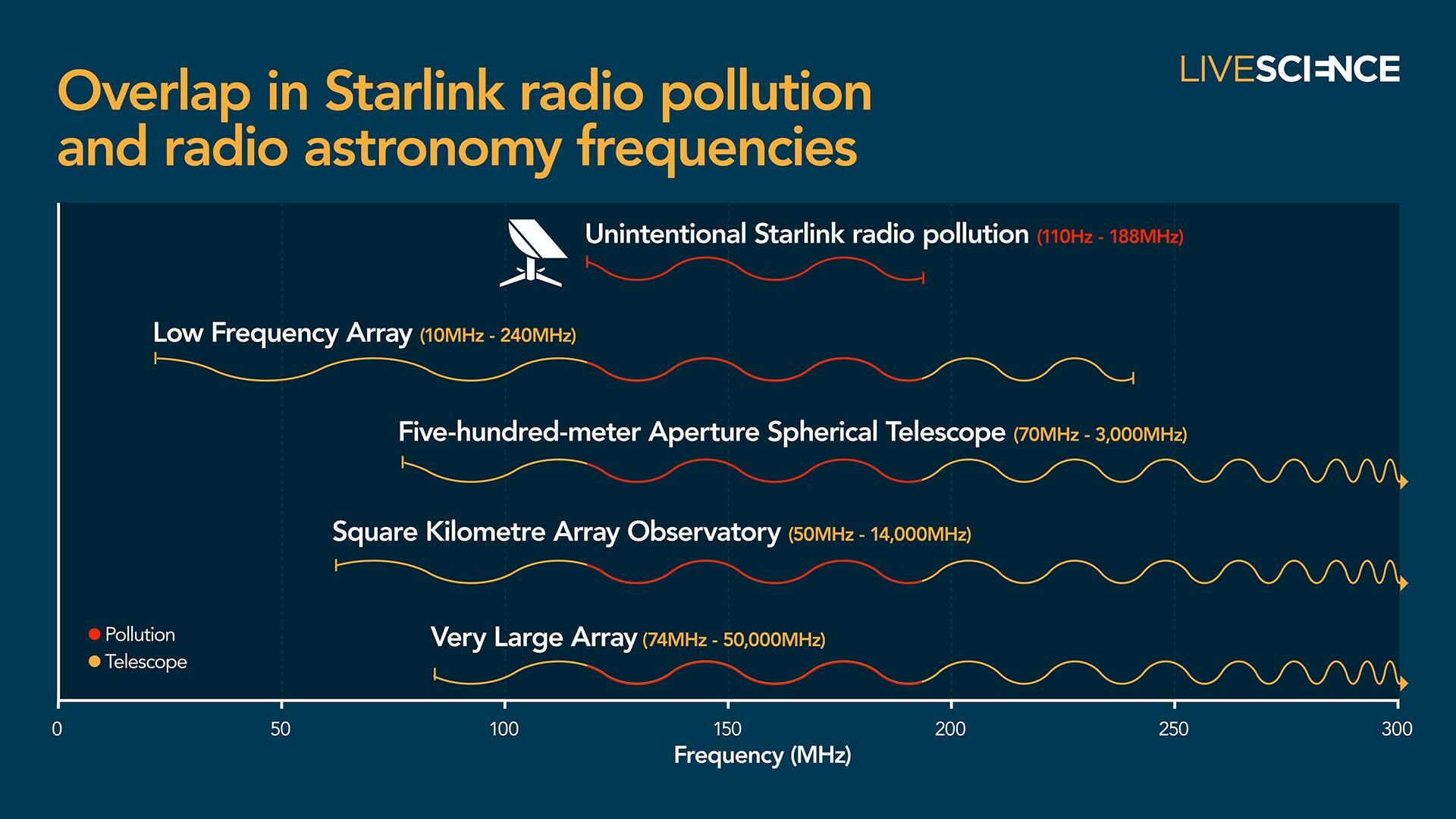
When Di Vruno and colleagues used Europe’s Low-Frequency Array (LOFAR) to observe a group of Generation 1 Starlink satellites, they found that the satellites were leaking UEMR at a much higher rate than other orbiting spacecraft. In their results, published in 2023, they reported that this radiation had frequencies between 110 and 188 megahertz, representing a large portion of the operating range of LOFAR (10 to 240 MHz), which scans for signals from pulsars, solar wind, cosmic rays and galaxies from the Age of Reionization.
“We were not surprised that we detected something,” Winkel, who was a co-author of the study, told Live Science. “But we didn’t anticipate that the level would be so high.” However, what came next was even more shocking.
In September 2024, Di Vruno and Winkel were co-authors of a follow-up LOFAR study that showed that the newer Generation 2 Starlink satellites were leaking over 30 times more UEMR than their predecessors, even though the researchers had previously warned SpaceX about the findings of the initial study. This radiation was emitted in roughly the same frequency bandwidth as the Gen 1 satellites.

And SpaceX will not be the only source of UEMR. Other companies, agencies and countries are also launching competing satellite constellations. These include Amazon’s Project Kuiper, Eutelsat’s OneWeb network (which is being launched by SpaceX), the European Union’s IRIS² network, AST SpaceMobile’s giant communication satellites, and China’s Qianfan, or “Thousand Sails,” constellation, Di Vruno noted.
“We don’t know [how much UEMR these spacecraft will emit] yet,” Winkel said. “Every satellite will have UEMR, but it remains to be seen, at what level.” As a result, many other frequencies could be affected, he added.
Closing cosmic “windows”
In addition to overlapping with the frequencies of distant signals, UEMR is also much more intense, or brighter, than naturally occurring radio-emitting objects.
For example, the UEMR emitted by the Gen 2 Starlink satellites is up to 10 million times brighter than the faintest radio-visible objects in the night sky, which include ancient galaxies located billions of light-years from Earth.
“This difference is similar to the faintest stars visible to the naked eye and the brightness of the full moon,” Cees Bassa, an astronomer at the Netherlands Institute for Radio Astronomy (ASTRON) and lead author of the 2024 study, previously stated.
Trying to detect signals from beyond one of these satellites is “like taking a photograph while someone points a flashlight in your direction,” Winkel said.
Some radio telescopes, such as LOFAR, will be hit harder than others, due to the frequencies they specialize in, but all radio telescopes will be affected “in different ways,” Di Vruno said.
Studies that require long-term datasets will be particularly susceptible to interference because there is a greater chance that leaky satellites will pass over them during the data collection period.
“As some projects need to continuously record data over hours, days, months or years, even tiny interference signals can have a statistical impact on the results,” Winkel said. “And perhaps the astronomer analyzing the data is not even aware of it.”
Intended downlinks, which are sent in multiple frequencies over 1 GHz, are also extremely bright and often appear in tandem with UEMR, exaggerating these effects.
As the problem gets worse, certain frequencies will become increasingly hard to study.
“Some radio bands could be completely wiped out,” Di Vruno said. “And if [these] science cases are just not possible anymore, it would mean that we are effectively closing ‘windows’ to observe our universe.”
Approaching the inflection point
As of May, there are 11,700 active satellites orbiting Earth. More than 7,300 of those (over 60%) are Starlink satellites, which have all been launched since 2019, according to Jonathan McDowell, an astronomer at the Harvard-Smithsonian Center for Astrophysics who has been tracking satellite launches and reentries since 1986.
But this is just the beginning. Well over 1 million satellites have been proposed by various organizations across the globe. And, while most of these may never be launched, many experts agree that we could eventually have up to 100,000 private satellites in LEO, potentially by as early as 2050. (This will likely be the maximum number that can be sustained at once without satellites crashing into one another.)
If that maximum number is reached, there is “real possibility” that we could reach an inflection point, beyond which ground-based radio astronomy would become effectively impossible, Di Vruno said.
Not all radio frequencies will be impacted. However, the obscured wavelengths will likely be lost for good, and the unaffected frequencies are unlikely to yield as many meaningful discoveries, he added.
At this point, we would no longer be able to “observe faint signals far out into the universe,” which would be “a serious problem,” Fionagh Thomson, a research fellow at Durham University in England who specializes in space ethics and was not involved in the LOFAR research, told Live Science.
Some radio astronomy could also still be achievable from space on a smaller scale. For example, there are plans to build a radio telescope on the moon. However, this would be very expensive and would capture limited data compared with the current suite of radio telescopes on Earth.
But even if we avoid the “worst-case scenario,” we risk severely limiting our astronomical capabilities unless satellite operators and researchers can find viable solutions to the problem, Thomson said.
Plugging leaks and cleaning data
Satellite operators can limit the impacts of their spacecraft on radio astronomy in a few ways.
For example, most intended downlink frequencies are kept separate from those used by radio astronomers. Some companies, including SpaceX, are also investigating the implementation of “boresight avoidance,” in which the satellites temporarily halt signal sending as they pass over radio “quiet zones,” or areas where radio telescopes are actively collecting data.

However, for astronomers, it is also imperative that these companies minimize UEMR. We know that this is possible because spacecraft from NASA and other space agencies produce much less accidental radiation than private satellites do.
But companies can only mitigate a satellite’s UEMR before it is launched into space. Once in LEO, “they are hard to fix,” Winkel said, so it is vital that they are tested for leaks before launch.
“If satellite operators care about the UEMR, we will be OK,” Di Vruno said. “It will be more difficult to conduct radio astronomy than it is now, but we understand technology evolves and we will evolve with it.”
Astronomers can also limit the impacts of radio pollution by removing the interfering signals from their datasets. However, this “cleaning” may cause astronomers to miss crucial data that is masked by the interference.
“The amount of data you have to discard or the effort that you need to put in to somehow clean the data also increases the more interference there is,” Winkel said. One way around this is to collect more data so that there is more left once you’ve cleaned it, but this also makes it much more expensive to do research, he added.
By working together, satellite operators and radio astronomers can solve the radio pollution issue without any external help, Thomson said. “But inevitably, satellite operators and the radio astronomy community have different goals, priorities and budgets, and finding workable solutions is no easy feat.”

Laying down the law
Because private companies and scientists have different priorities, the most effective solution to the problem is to impose strict limits on the amount of UEMR that private spacecraft can give off, experts told Live Science.
“We would, of course, be more relaxed if proper regulation was in place,” Winkel said.
At present, specific radio frequencies, like those used by LOFAR, are protected on behalf of astronomers by the International Telecommunication Union (ITU) — a United Nations agency responsible for regulating global communications technologies. However, these regulations apply only to Earth-based sources of radio pollution, not to private spacecraft.
Most satellite operators do try to respect the ITU’s guidelines when using intended downlinks — with limited degrees of success. But UEMR frequently overlaps with the protected wavelengths and remains perfectly legal.
Some experts also argue that the ITU’s radio-quiet frequency bands are no longer wide enough to protect radio astronomy: “They were set in a different era and are arguably too narrow for modern radio astronomy,” Thomson said.
The IAU’s CPU is hoping to have strict new regulations in place by the end of the decade and hopes that a breakthrough can be achieved at the next World Radiocommunication Conference, in 2027, Di Vruno said. Therefore, it is important for researchers to closely monitor the radiation leaking from private satellite constellations over the next few years, so that any new rules can have an effective and long-standing impact, he added.
However, even stricter guidelines might not be enough if organizations don’t respect them.
“There is an assumption that imposing laws will fix complex problems,” Thomson said. “But not all viable solutions involve implementing binding legislation,” she warned.








